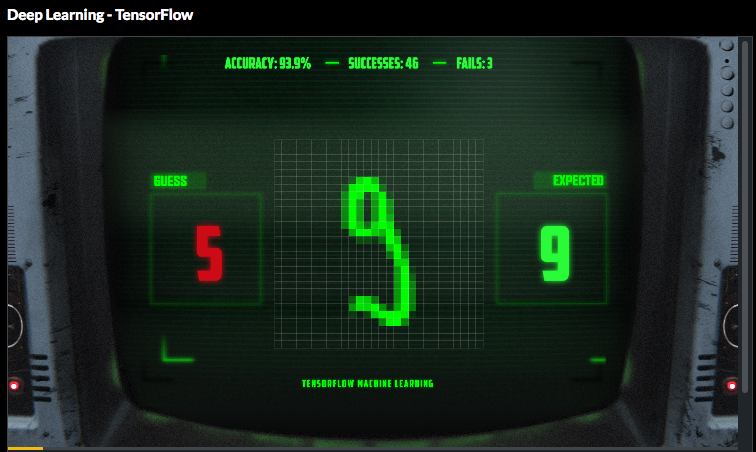Originally published on Medium
Machine Learning
Lately, Machine Learning has become one of the hottest topics for all companies — in any area — . Due to the exponential growth of data, there is a huge economic and strategic interest to be able to extract every ounce of information from it; with the promise of understanding user needs, predicting actions, and proposing the most accurate content. Faster. Deeper.
Deep Learning
Since 2000, neural networks have evolved into something more advanced known as Deep Learning. It is a specific field of Machine Learning, inspired by biological intelligence. It represents data using different layers of interconnected blocks. Each layer is responsible for a new level of abstraction or new concept.
Big companies like Facebook, Google and Microsoft use Deep Learning to extract information from all types of data (pictures, videos, text, website, …). Recently they all released their frameworks publicly. With the goal to make great progress in this field. See CNTK, FAIR and TensorFlow.
Want to learn more about Machine Learning?
Learn by Doing
I’m deeply convinced that we learn strongly by practicing. To really understand Machine Learning, you do not only need to know the main tools and concepts, but you have to fully understand what’s under the hood. From experience, I advise to pick algorithms which you find interesting and apply them to a real problem. There is plenty of available data to play with and you will have a concrete objective to achieve.
One big obstacle remains. All the files and tools available are often hard to deal with (configuration, time-consuming installation, weird formatting of files, …). And, as always, there is a dramatic lack of visual representation.
CodinGame and TensorFlow
CodinGame has recently made the TensorFlow framework available for coding and designed a specific problem for it. It smartly enables Machine Learning beginners to practice the TensorFlow tutorial.
Edit 28/08: the puzzle has been hidden because TensorFlow has evolved. We’ll update it as soon as possible
The goal is to design an algorithm that, given some pictures, recognises digits from 0 to 9. Each picture is a greyscale image with a resolution of 28×28. This way, coders can test different techniques and algorithms using — or not — the TensorFlow framework. No installation is required and you can instantly get the visual rendering of your program guessing the digits. All without any efforts.

Deep Learning – TensorFlow tutorial
Finally the accuracy of all programs could be compared and ranked on a leaderboard. Who has dreamed of comparing his results as easily?
CodinGame wants to go further by offering different playgrounds / data to practice. Maybe help scientific research by opening some problems to the community. One important incoming feature will be the possibility to train your program on your computer and then upload the resulting model.
What’s Next?
Over time, the focus of Machine Learning shifted from supervised learning to deeper and more generalist intelligence. We are now seeing the first signs of experimental artificial consciousness. Strong AI is coming and it will certainly be one of the most important scientific milestones of all time.
Coders, are you up for the challenge?